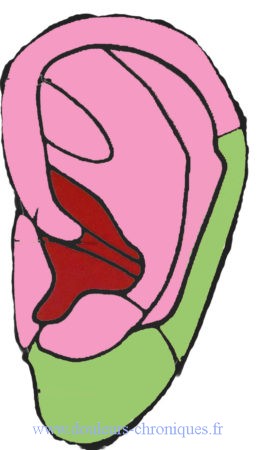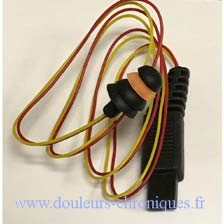Neurostimulation of the vagus nerve.
Principle
The vagus or vagus nerve:
- Controls the vocal cords, allows swallowing, keeps the larynx open for breathing.
- Slows heart rate.
- Starts and controls digestion,
- Modifies inflammatory reactions,
- Influence of many endocrine glands, which influence vital functions:
- adrenal glands (stress hormones),
- thyroid,
- pancreas, which produces insulin which regulates blood sugar and fat storage.
80 to 90% of the fibers of the vagus nerve are used to send information from your organs and your digestive system to your brain. It relays information from the “enteric nervous system”, or “second brain”, made up of 200 million neurons along the intestines, which is used to control digestion.
Stimulation of the Vagus Nerve triggers the following effects:
- A slowing of the heart rate
- A decrease in the caliber of the bronchi
- Strengthening the contraction of the smooth muscles of the digestive tract
- Increased secretion of saliva and digestive juices
- The vegetative function of the vagus nerve involves the heart and the vessels they
moderate. - The vagus nerve also has a hypotensive function (lowering blood pressure).
- The vegetative action of the vagus nerve also applies to the adrenal glands, the pancreas, the thyroid, the endocrine glands, the tracheo-broncho-pulmonary apparatus and the digestive system.
- An immunomodulatory action
Stimulation of the vagus nerve is done by stimulating a part of the ear which is innervated by this nerve:

In pink territory of the trigeminal nerve
In red territory of the vagus nerve
In green territory of the auricular nerve
Medical indications
- Epilepsy
- Depression, anxiety
- Tinnitus
- Hypertension
- Digestive disorders: Irritable bowel
- Fibromyalgia
- CRPS
- Visceral and pelvic pain
- Migraine
- Cluster headache
- Inflammatory disease of the digestive tract
- Some preliminary studies would seem to show the interest of this stimulation in the care of patients with “long COVID”.
Stimulation technique
Stimulation is done using a specific electrode:

This electrode is covered with a specific spray to promote electrical conduction. It is placed at the level of the left ear, which reduces the side effects, in particular cardiovascular, and which therefore improves tolerance.
The electrode is then connected to a standard cutaneous neurostimulation device (TENS)
The stimulation frequency is between 25 Hz and 80 Hz depending on the indications
The sessions are done twice a day for a period of 30 to 45 minutes.
The effects of neurostimulation are not immediate and require several weeks of treatment to be effective and therefore to be evaluated.
